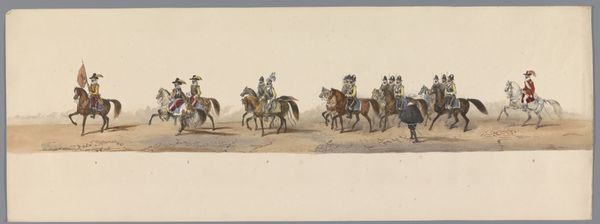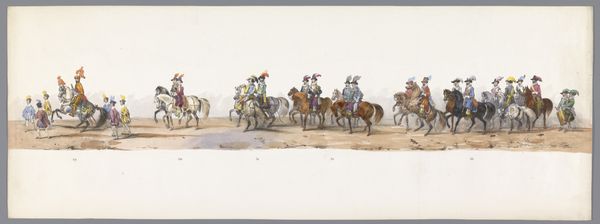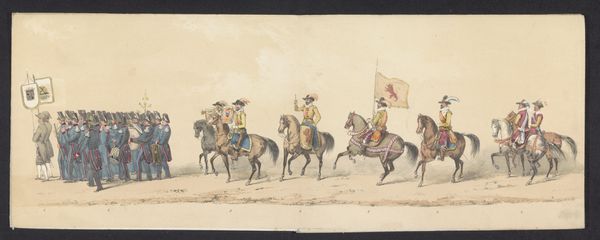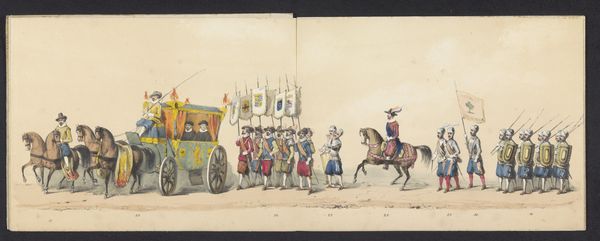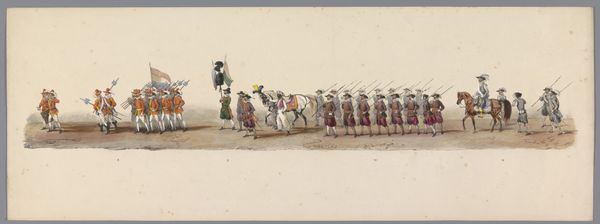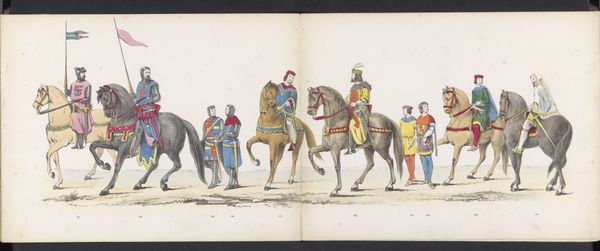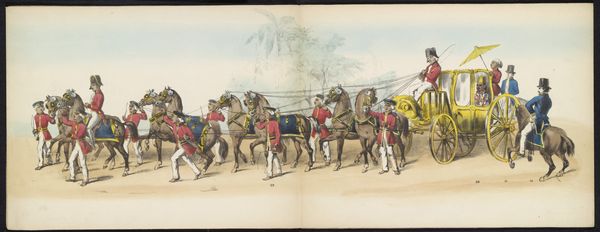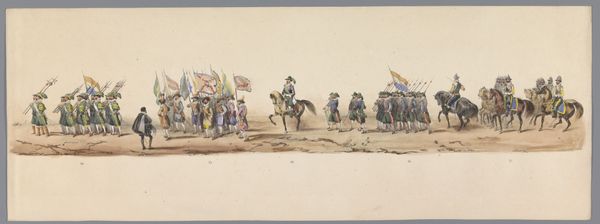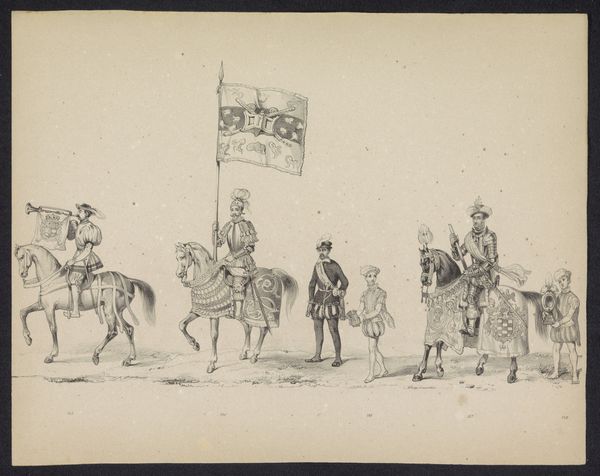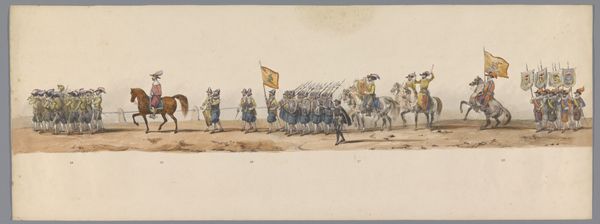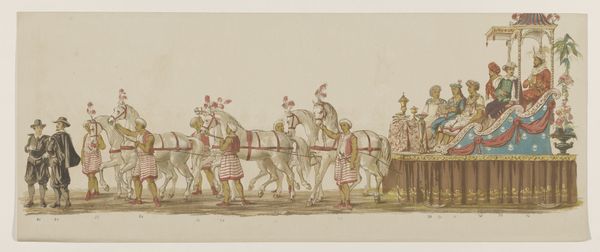
Historische optocht bij het tweede eeuwfeest van de Utrechtse Hogeschool, 1836 (plaat 6) 1837
0:00
0:00
victoradam
Rijksmuseum
drawing, plein-air, watercolor
#
drawing
#
plein-air
#
watercolor
#
coloured pencil
#
romanticism
#
cityscape
#
genre-painting
#
history-painting
Dimensions: height 235 mm, width 315 mm
Copyright: Rijks Museum: Open Domain
Curator: What a lively scene! Victor Adam created this watercolor drawing in 1837, capturing a historical procession celebrating the bicentennial of Utrecht University. It's currently held in the Rijksmuseum collection. Editor: Immediately, I’m struck by the contrast. The detailed, almost regimented depiction of the procession evokes a sense of formality, while the muted tones create a surprisingly dreamlike atmosphere. It feels both grand and delicate. Curator: Absolutely. Think about the social context here. It's a meticulously documented depiction of a very carefully orchestrated historical re-enactment. The choice of watercolor allows for capturing intricate details in costumes and expressions. There’s a clear understanding of material culture— the rendering of fabrics, the sheen of the horse harnesses. Editor: And those costumes, while detailed, are really visual shorthands. The marching soldiers with their blue banner. The horses each have riders and a specific saddle decoration that might signify their heraldic roles in the procession. Each detail hints at larger narratives. Is the blue banner an important symbol for the University? Curator: Likely yes. Remember the period; Romanticism heavily influenced art. But instead of sweeping landscapes, we get detailed observation and what appears to be quite deliberate staging. The application of coloured pencil shows that. What narratives do you see being reinforced? Is there a tension between documentation and romanticised history being made and visualized in the application of medium and theme? Editor: The placement of the large cross at the end of the parade evokes a religious undertone within the celebration, but more generally, the overall imagery reads like a secular event paying homage to both knowledge and civic order. The procession acts almost as a physical manifestation of institutional authority. Note the bright colour in the regal costumes versus the marching army men! It creates a sharp division and focus. The painting shows great pageantry with carriages with golden lions. But what does the use of such a large perspective ratio intend to signify to a viewer? Curator: Exactly! The horizontal format extends our viewpoint; we observe, distanced. Its application in such detail must be seen in connection to print media: think of the accessibility this potentially enabled through engravings, etching. Think of the wider social circles involved outside the direct University, with possibilities of sale, wider circulation to more diverse consumers! Editor: Very interesting observation. To sum up, Adam gives us not just a procession but also, in effect, gives us potent emblems that point toward knowledge, power, religion and of the civic and hierarchical structures inherent within 19th century society. The imagery shows historical re-enactment within civic contexts, the very image of how cultural memory takes tangible form, not simply history but "heritage" being manufactured right before our eyes. Curator: An artwork that's so rich in social and historical details and with the way Adam captured these specific moments by this procession within and towards an open space in Utrecht! There's plenty more to unpack when considering this piece and the labour involved!
Comments
No comments
Be the first to comment and join the conversation on the ultimate creative platform.
